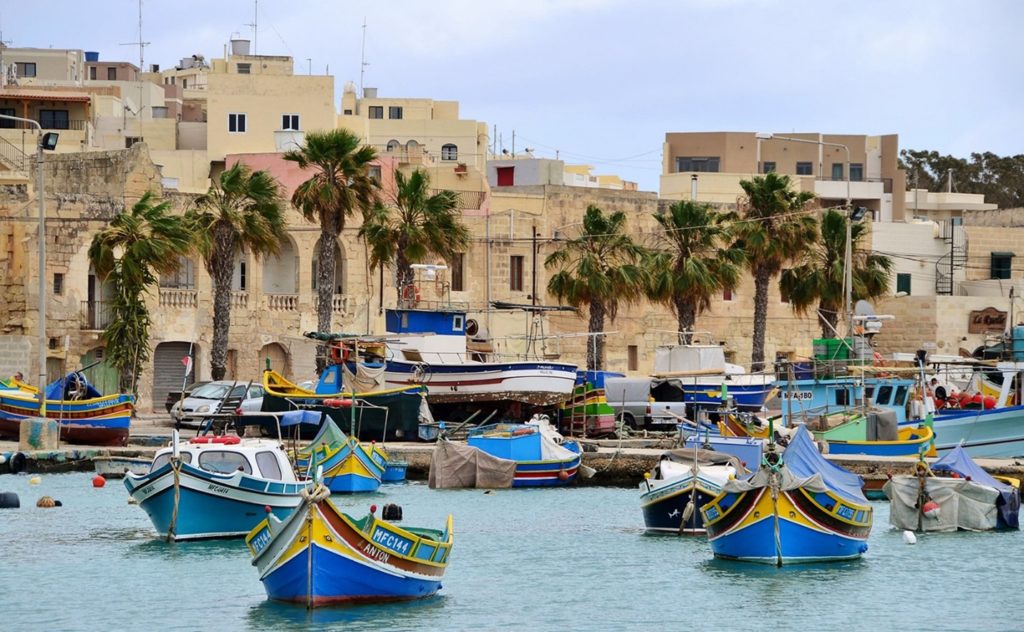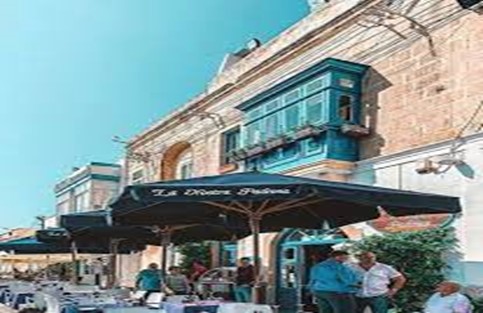

Author: Kent Moors, Ph.D.
This edition of the Classified Intelligence Brief Spy Tale series is the first following a compromise reached with “mother” last week. Actually, four of us met on neutral ground barely outside the US to agree on new guidelines for my writing on such matters.
For some time now, there has also been another matter afoot. I am now well into releasing Spy Tales each week. But that has also given way to a larger project. A fuller version is emerging, one that will be a very different vehicle. This other initiative requires that a broader agreement be struck, a separate reason for the meeting.
And for that, a brief introduction to the person who sold me on the idea.
At age 86, Dame Stella Rimington is still with us. The first female Director General of the Security Service, the UK’s domestic intelligence outfit better known as MI5, her appointment in 1992 was also the first to be made public. Thereafter, Dame Stella conducted a remarkably open office for a position better known for being in the shadows. Her style included what had long been considered taboo – TV interviews.


Upon leaving office in 1996, she wrote a heavily redacted autobiography (Open Secret, released in 2001), sat on some corporate boards, and then moved into fiction. The first of ten novels about MI5 officer Liz Carlyle appeared in 2004 (At Risk).
Toward the end of the 2000s, I happened to run into Dame Stella at a reception in London. So, I asked her, “Why fiction?” The answer was both direct and insightful. “You have greater leverage against the censors,” she responded with a smile, “labeled a novel, there is more cover.”
Cover is something any intel officer knows a lot about.
That cover is even necessary against one’s own. The last Liz Carlyle novel appeared in 2018. A few months later, Sir Richard Dearlove, retired head of the Secret Intelligence Service (MI6, British foreign intelligence) and now board of trustees chair at the University of London, took Dame Stella (as well as David Cornwell, better known as John le Carré) to task in a newspaper diatribe for using intel experience to write books. She has not released anything since.
In my case, I required an agreement before I ventured forward into more controversial matters. That is currently developing acceptably.
As I have noted before, Spy Tales installments have always carried with them personally imposed restrictions. I will not talk about any matters that impact ongoing ops and/or compromise security matters, nor will I weaken the two hallowed pillars upon which intel work is predicated: sources and methods.
Sources, also called agents or assets, are the people intelligence operations put in harm’s way. These are foreign citizens who do the actual spying for you against their own, often with tragic consequences. Methods address how the game is played.
Sometimes, both of these have results that are less than pristine. An operative is supposed to defend sources, and most do just that. They become like family. You end up being support, a father confessor, a ready shoulder to cry on. However, in the process, every weakness is exploited and whatever benefits an agent is seeking are doled out slowly, forcing him or her to come back for more.
Not always a pretty picture. But it can get worse. Upon occasion, the relationship deteriorates to the point that one needs to cut the umbilical cord. As Robert Redford tells Brad Pitt in the 2001 movie Spy Game: “If it is ever a choice between you and an asset, send flowers.” I was told something very similar in training.
As for methods, as the objects of an op become more serious, so do the ways used to achieve them. Sometimes, I needed to hold my nose to make it through the day.
The combinations of how a source is approached and what methods are employed do not always end up matters you write home about. Occasionally, it is wrenching. Sometimes, as in this tale, it results from an officer covering up his own mistakes.
For the first time, “mother” has permitted me to expand the Spy Tale approach to write about such things. Don’t worry, there are future installments in which I will talk about my own serious (and callous) decisions and screwups. Can’t avoid it; comes with the territory.
So today we go back to 1997.
I was seconded to an ongoing op on the island of Malta. This archipelago in the central Mediterranean Sea is 50 miles south of Italy, about 175 miles east of Tunisia and 210 miles north of Libya on the North African coast. Encompassing barely 122 square miles and having some 515,000 inhabitants, Malta is one of the smallest yet densely populated independent nations on the planet.


The tiny island’s location has made it strategically important for about 8,000 years with inhabitants dating back that long. The fascinating collection of medieval walls, castles, fortresses, and archaeological digs attests to Malta’s historical significance.
Sorry, but the fabulous jewel incrusted Maltese Falcon of Dashiell Hammett, Humphrey Bogart, and Sam Spade fame, never existed. It was fictionalized from an old popular tale about an annual bequeath to a nobleman on the island. This was apparently of a live bird. Later, that passed down story merged with versions of a more expensive “falcon” coming from Milan in Italy to create some of the background for the novel and the movie.
On the other hand, the 47-pound lead prop Bogart holds in those immortal publicity photos is quite another matter. It sold in 2013 for $4.1 million at auction.
That may be fiction but Malta does have a connection to a tradition of the unsavory characters populating the novel and movie. The island has had a developed history of organized crime, smuggling, and espionage. At one point in the mid-nineteenth century a European diplomat stationed there lamented that “one of every three you meet in the street is either deserving of being locked up or works for a national spy service.”
Upon occasion, these professions conducted just beneath the surface combine.
The operation I moved into involved tracing purloined military equipment moving out of war-torn Yugoslavia into a broader international market. Then (and now) Malta had an unusually large portion of Serbians in its residential population. There were also several import-export companies owned by Serbian interests and based in Valletta, the capital.
Everything from AK47s to tanks to spare jet parts to stinger missiles were disappearing from the war zone and popping up in other places. Much of the volume was (on paper at least) transiting through Malta.
Normally, I would not have been drawn from my more usual European theater of operations into this. As I have noted in the past, throughout my time in service my area remained primarily counterintelligence against Russian intelligence efforts.
Well, it seemed that there was an SVR factor to consider in the “Malta Exchange” as it became known. The SVR (Russian Foreign Intelligence Service) is the successor of the Soviet KGB First Chief Directorate, the division responsible for operations outside the country (and after the fall of the USSR my principal interest). Internal matters were moved over to the FSB (Federal Security Service) from the KGB’s Second Chief Directorate. Each retained its headquarters from KGB days – SVR at the Yasnevo compound on the outskirts of Moscow (the design of which having a curious similarity to the CIA headquarters at Langley, VA); FSB remaining at the infamous main headquarters for every secret police since Catherine the Great. Carrying the name of the large square on which it is located in central Moscow (Lubyanka) it is also connected to an equally infamous prison by the same name. In striking irony, the now FSB base is across the square from the world’s largest toy store – Detsky Mir (“Children’s World), as I noted (accompanied by a photo) in “”Sergei” Runs Interference to Sheremetyevo,” Classified Intelligence Brief, June 15, 2021.
We had received confirmed intel from several sources that the SVR were “facilitating” the transfer of ordinance to designated hot spots were the Kremlin had their own policy designs. These included locations in North Africa were proximity made Malta a highly desired transfer point.
I had previously tracked examples of the pre-shipment paperwork through Continental banks to identify the responsible parties. In each instance the transmitter was Serbian. Intermediary fiduciary agents were located in Switzerland and were either owned by or had investors among parties back in Russia. In at least two cases, individuals involved were known to us as SVR officers. The end receiver of the shipments I could track was a “commercial concern” having an address at Khoms, Libya, down the coast from the Libyan capital of Tripoli.
Khoms would become the base of an indigenous group closely linked to Russian interests that would become involved in the ongoing Libyan civil war after strongmen Muammar Gaddafi was killed over a decade later. Never let it be said that Yasnevo and its Kremlin masters do not plan ahead.
The transfers were usually labeled “farm equipment” with the manifests and other paperwork indicating that the trading company of record for the shipments was an entity called Koncern Srboexport DOO Beograd (SBE), based in Zabrezje, Serbia. SBE further leased out dock and warehouse space at the port in Valletta. Its office, however, was further down the southeastern Maltese cast at the picturesque village of Marsaxlokk. The village has less than 4,000 residents. I immediately fell in love with the place. It reminded me of the time I spent tracking Russian shipments off of Santorini (see “Watching Ships in the Aegean,” Classified Intelligence Brief, December 30, 2020).


While the SBE address in question appeared to be residential, a walk by confirmed it was in fact an office. The “official” staff was comprised of five individuals, two Maltese, two Serbian…and a Russian. As also became apparent, the SVR had hired “heavy locals” for other purposes arising from what SBE was doing.
The Russian at SBE was an asset. Unlike others who will figure in this tale, I regard guarding the identify of sources as important. Unfortunately, this fellow was to become collateral damage.
I will call him Ivan. He was our plant at SBE and a figure who had assisted in other actions against SVR use of otherwise legitimate Russian commercial shipping. He had maneuvered himself into the “Malta Exchange” at our instructions and was passing on the intel. Some of the initial transmissions had allowed me to identify banking conduits while I was still operating elsewhere in Europe.
Shortly after arrival on Malta and taking up residence in a small apartment at Qrajden just further down the coast, I contacted Ivan. Thereafter, I would receive regular updates using a standard “cutout” approach. He would leave a message for “Karl” (my cover name) with a rather attractive female bartender (“Marlene”) at the La Nostra Padrona, a popular local restaurant overlooking the port of Marsaxlokk. This is one of those places you go to sample genuine local rather than tourist fare. It is as popular today as it was when I was there.


Tradecraft required that Ivan and I never make physical contact. I would pass through the busy restaurant when the bartender was working and Marlene upon seeing me would touch her chin if there was a message, her nose if there was not. That the bar was always very crowded also served as good cover.
As for the message, it was merely the gesture. That would tell me whether or not to go to a separate location where a “dead drop” served as the actual location for whatever Ivan wanted me to see. As procedures went, this one was rather simple but accomplished the purpose.
Until a guy on our side (let’s call him “good ole Pete”) decided he wanted to be the star of the show.
Word came down from higher pay grades that the SBE trading operation was to be squeezed. The intent was to force the SVR to close the venue and move it someplace else. The belief was high that by so doing they would have to expose more of the venue and allow a greater penetration of their activities. If in the course of all this what the Russians were doing were made public, so much the better. Embarrassing the other side was always a way of limiting their leverage.
Except this time Pete, a junior officer at the Agency station in Valletta, decided to jump the line. What I had with Ivan allowed the gaining of intel but could not be used to close the CBE trade. The officer decided to advance his career by forcing Ivan to make a brush pass. This is when two individuals briefly come in contact and exchange something physical.
This is highly dangerous, especially in the situation we found ourselves. But certainly, more dangerous to Ivan than to anybody else.
The pass was a price of paper detailing who in local media (another of our agents) should be provided with information to compromise the SVR-SBE connection. To affect the pass, Pete conveyed to Marlene verbally where Ivan was to go for the pass, a major violation of standard operations.
I hit the ceiling when I found out but had no ability to countermand the move. I was a “special operations officer” brought in to supplement the local station. The local station, on the other hand, ran the show.
Whenever I unloaded the dead drop, I would run an extensive SDR (surveillance detection route), involving a series of cutbacks, changes of directions and taxis, to assess whether I was being followed.
On the day of good ole Pete’s brush pass caper he went directly from the station to the location. No SDR with, apparently, several of the local goons hired by the SVR in tow.
SBE closed its trading venture. However, Ivan and the local media agent disappeared.
As for Marlene, she was no longer at La Nostra Padrona when I went checking. Another bartender told me she had moved back to her parent’s farm on Gozo, the other main island northwest of Malta proper.
She refused to see me … screaming and throwing in my direction most of the pots from her mother’s kitchen.
Since closing down the SBE trading route had become the goal of the operation, good ole Pete received a commendation back home and eventually became a regional director through retirement.
For some, if it is a choice between protecting a source and advancing one’s career, they send flowers.


Dr. Kent Moors
This is an installment of Classified Intelligence Brief, your guide to what’s really happening behind the headlines… and how to profit from it. Dr. Kent Moors served the United States for 30 years as one of the most highly decorated intelligence operatives alive today (including THREE Presidential commendations).
After moving through the inner circles of royalty, oligarchs, billionaires, and the uber-rich, he discovered some of the most important secrets regarding finance, geo-politics, and business. As a result, he built one of the most impressive rolodexes in the world. His insights and network of contacts took him from a Vietnam veteran to becoming one of the globe’s most sought after consultants, with clients including six of the largest energy companies and the United States government.
Now, Dr. Moors is sharing his proprietary research every week…knowledge filtered through his decades as an internationally recognized professor and scholar, intelligence operative, business consultant, investor, and geo-political “troubleshooter.” This publication is designed to give you an insider’s view of what is really happening on the geo-political stage.
You can sign up for FREE to Classified Intelligence Brief and begin receiving insights from Dr. Moors and his team immediately.
Just click here – https://classifiedintelligencebrief.com/






